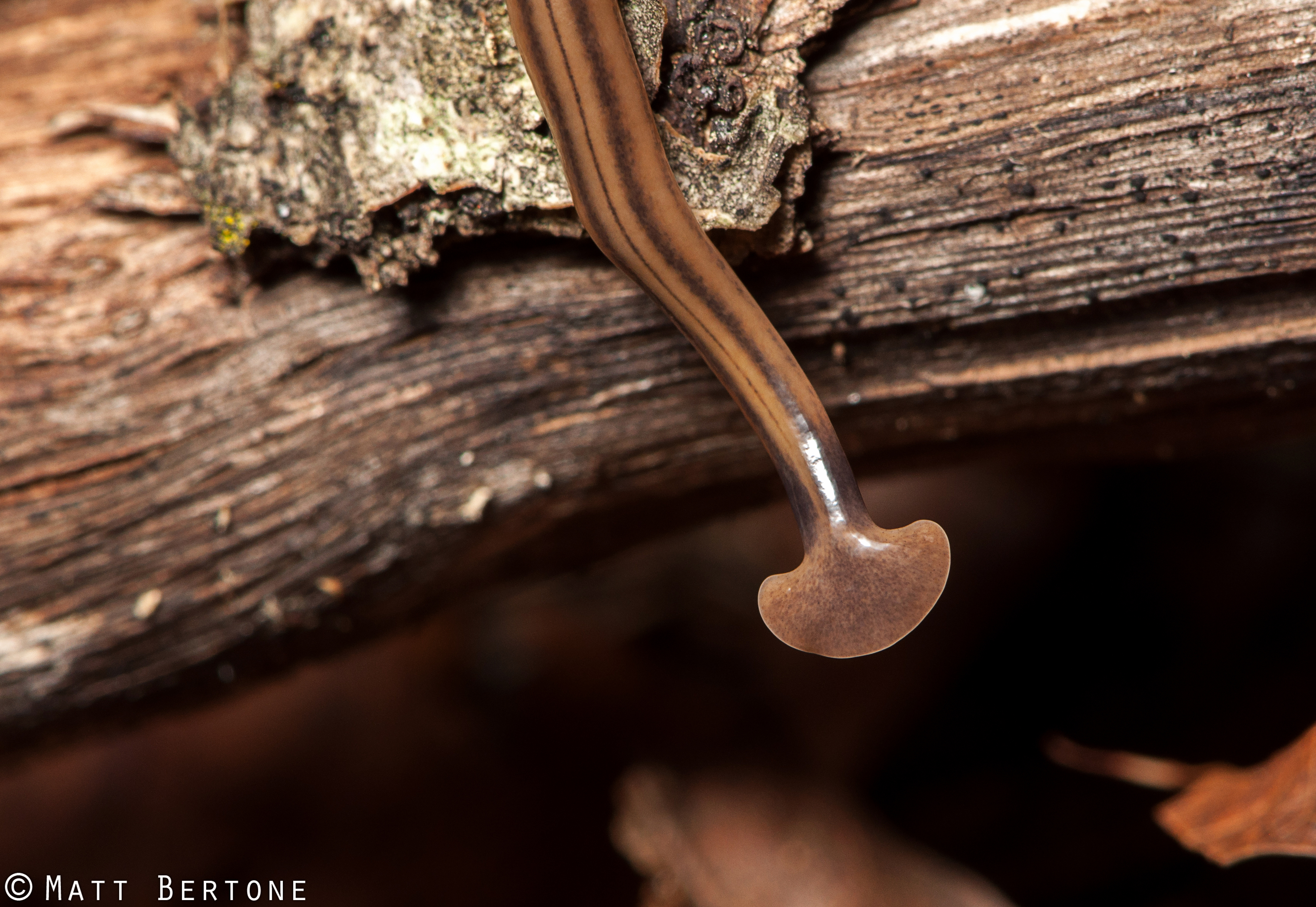https://caldwell.ces.ncsu.edu/2022/06/hammerhead-worm-sightings-are-on-the-rise/
https://en.wikipedia.org/wiki/Bipalium
Bipalium is a genus of large predatory land planarians. They are often loosely called "hammerhead worms" or "broadhead planarians" because of the distinctive shape of their head region. Land planarians are unique in that they possess a "creeping sole", a highly ciliated region on the ventral epidermis that helps them to creep over the substrate
When captured, earthworms begin to react to the attack, but the flatworm uses the muscles in its body, as well as sticky secretions, to attach itself to the earthworm to prevent escape.
To feed on their prey, species of Bipalium often evert their pharynges from their mouths, located on the midventral portion of their bodies, and secrete enzymes that begin the digestion of the prey. The liquefied tissues are sucked into the branching gut of the flatworms by ciliary action.[14]
B. adventitium reproduces sexually and creates egg capsules, which hatch around 3 weeks post-deposition. The egg capsules have a tough exterior and generally contain multiple juveniles.[6]
Currently, four invasive species of Bipalium are known in the United States: B. adventitium, B. kewense, B. pennsylvanicum, and B. vagum
Penn State
Land planaria are predatory on soft-bodied invertebrates, including earthworms and other annelid worms, molluscs such as snails and slugs, isopods, and insects.
Terrestrial flatworms are hermaphrodites, which means that every individual has both male and female reproductive organs. This makes sexual reproduction easier as each individual worm only needs to find another individual to mate rather than males and females needing to find the opposite sex. Land planarians can also reproduce through a procession called "binary fission" where an individual flatworm spontaneously breaks in half. Each half regrows then the missing half – the head regrows the tail and the tail regrows a head – in about a week, resulting in two flatworms instead of one.
Read more at: https://burke.ces.ncsu.edu/2022/06/hammerhead-worms/
Read more at: https://caldwell.ces.ncsu.edu/2022/06/hammerhead-worm-sightings-are-on-the-rise/h
Read more at: https://caldwell.ces.ncsu.edu/2022/06/hammerhead-worm-sightings-are-on-the-rise/
Read more at: https://caldwell.ces.ncsu.edu/2022/06/hammerhead-worm-sightings-are-on-the-rise/
Read more at: https://caldwell.ces.ncsu.edu/2022/06/hammerhead-worm-sightings-are-on-the-rise/
Read more at: https://caldwell.ces.ncsu.edu/2022/06/hammerhead-worm-sightings-are-on-the-rise/
Read more at: https://caldwell.ces.ncsu.edu/2022/06/hammerhead-worm-sightings-are-on-the-rise/
Read more at: https://caldwell.ces.ncsu.edu/2022/06/hammerhead-worm-sightings-are-on-the-rise/
Read more at: https://caldwell.ces.ncsu.edu/2022/06/hammerhead-worm-sightings-are-on-the-rise/
Read more at: https://caldwell.ces.ncsu.edu/2022/06/hammerhead-worm-sightings-are-on-the-rise/

No comments:
Post a Comment